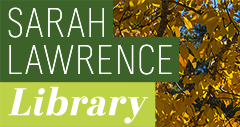Date of Award
5-2017
Document Type
Thesis - Open Access
Degree Name
MS in Dance/Movement Therapy
Department
Dance/Movement Therapy Graduate Program
Abstract
Dance/movement therapy (DMT) is a strengths-based therapeutic intervention that focuses on the mind-body connection and its role in behavior, expression, cognition, and communication. Dance has served a purpose beyond entertainment for thousands of years – even, and especially, before recorded history. Cultures worldwide developed dances to celebrate, to mourn, to worship, and to work. The folk dances of ancient societies, now enjoyed and performed primarily for their cultural and aesthetic value, showed evidence of an inherent understanding of the tenets of dance/movement therapy. Originally representing and working within the rhythmic context of nature, figures such as chains and circles continue to appear in present-day folk dance traditions such as Irish set dance, suggesting community, the sun, and the circle of life (Lawson, 1953) and relating the history of their people through movement. Once performed “at the crossroads” of the Irish countryside in social gatherings called céilithe (pronounced “KAY-lees”, plural of the Irish Gaelic “céilí”), these circular set dances brought people together to meet and to remember (Allen, 2003). Today, an older generation of dancers has brought about a rebirth of traditional Irish set dancing as a vehicle for healing and self-discovery through storytelling. Community connections are restored through set dance as a form of reminiscence therapy, providing a new sense of meaning, purpose, and a life well lived (Snyder, 2005), as well as providing an antidote to isolation and fostering a sense of feeling “understood”. The experience of being “listened to” from a movement perspective – or in dance/movement therapy, wholly “seen” – reinforces self-identification, empowerment, and conscious aging.
Recommended Citation
Kelly, Caitlin, "Dancing at the crossroads of body and mind: The therapeutic use of Irish set dancing as storytelling for the elderly" (2017). Dance/Movement Therapy Theses. 25.
https://digitalcommons.slc.edu/dmt_etd/25


